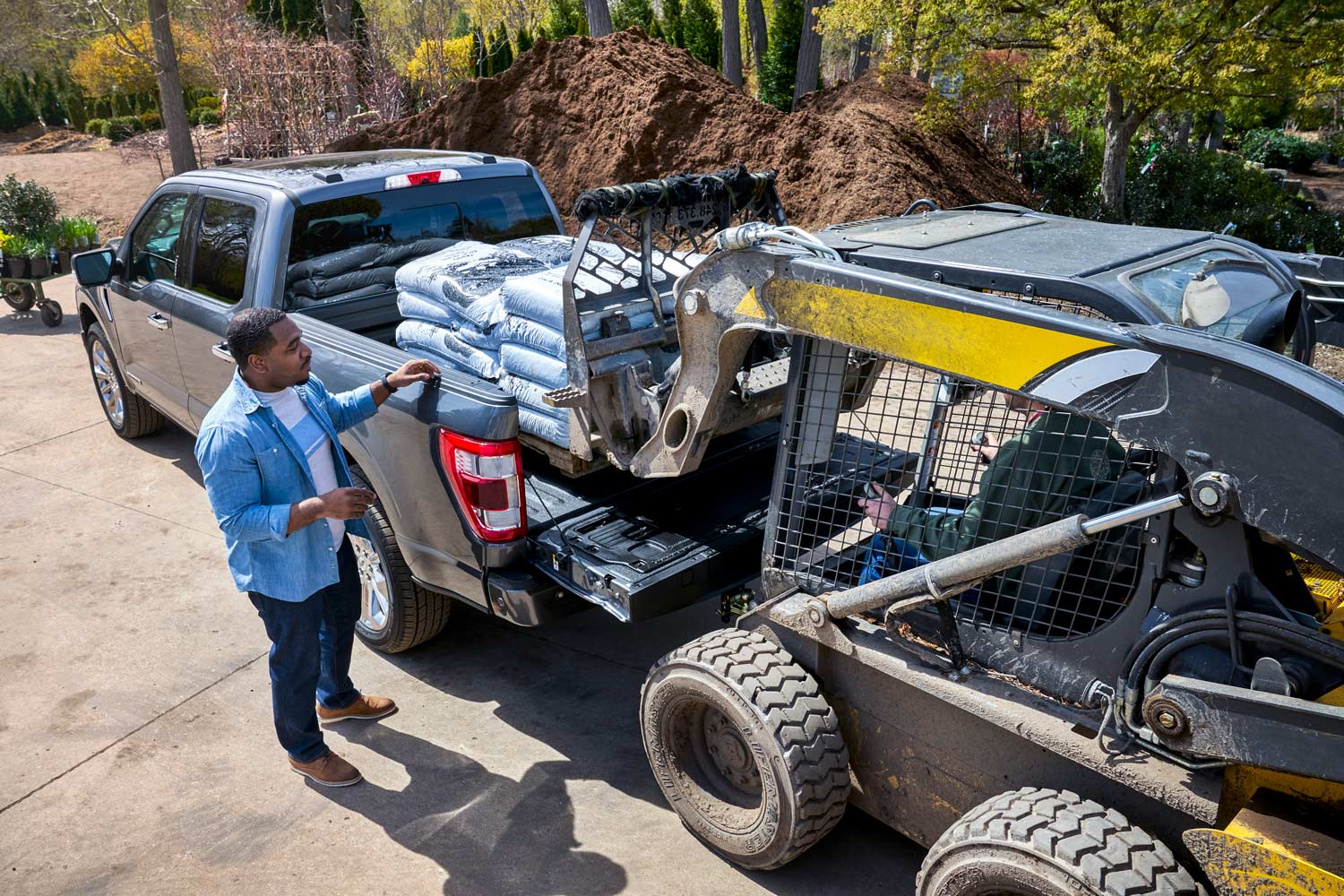What Is Payload on a Pickup Truck?
How much a truck can haul and how much it can tow are two different calculations.
 Ford
Ford
Article QuickTakes:
Not every truck can haul the same load in its cargo bed or inside its cabin. Understanding how a pickup's payload is determined and how it can impact a vehicle's practicality and performance is critical when purchasing a truck and operating it safely.
Here's what you need to know about payload on a truck.
What is payload?
Payload is the total weight a truck can carry safely down the road. For most people, this translates to the weight of a load in a pickup's cargo bed. But payload is all encompassing; it includes passengers, equipment, or any other items.
A truck's payload capacity varies depending on its size and trim level. This means that even within the same pickup brand, there can be many different payload ratings. Usually, total payload is listed in the owner's manual and on a sticker placed on the driver's side doorjamb. It is also often listed online on the manufacturer's website.
 Ford
Ford
How is payload calculated
A calculation determines payload based on a truck's gross vehicle weight rating (GVWR), a term used to describe the total weight a pickup's platform is designed to handle, including the weight of the vehicle itself.
An easy way to determine a truck's payload capacity is to take its GVWR and subtract its curb weight. For instance, a 2021 Ford F-150 SuperCrew — with the 5.0-liter V8 and rear-wheel drive — has a GVWR of 7,850 pounds and a curb weight of 4,912 pounds results in a payload capacity of 2,900 pounds. You'll notice the math isn't exact, because Ford rounds the curb weight up to 4,950 pounds.
However, this calculation doesn't mean you can dump 2,900 pounds in the bed, fill the cabin with passengers, and still be safe. Every bit of weight inside a pickup counts, which means you need to balance the load in the bed with the weight of all passengers to stay in the safety zone while hauling.
How does payload relate to towing capacity?
It is still possible to load a truck to its maximum payload capacity while pulling a trailer at its maximum towing capacity. A separate calculation called gross combined weight rating (GCWR) determines tow ratings.
There is one crucial detail to keep in mind, however, when mixing payload and towing. A trailer's tongue weight — the downward force directly transferred to the tow vehicle via the hitch — counts as payload. Therefore, a truck with a 2,000-pound payload rating and a 300-pound tongue weight from a trailer would only have 1,700 pounds of payload capacity available for hauling gear and passengers.
When operating a vehicle at the limits of payload and towing capacity simultaneously, the extra weight extends braking distances, slows acceleration, and puts extra strain on a vehicle's suspension and tires. Ensure that your truck's components are in excellent shape before attempting to tow and haul at or near the maximum.



